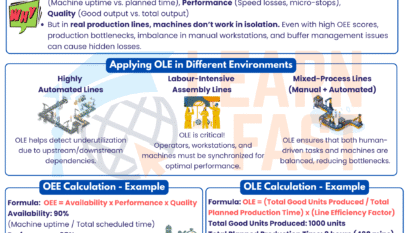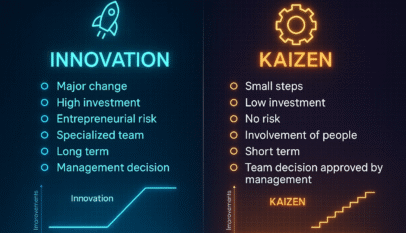The principles of Lean Manufacturing have been adopted by many organizations worldwide. The idea behind Lean is to eliminate waste and improve efficiency, productivity, and quality. The concept of waste in Lean is defined as any activity that does not add value to the customer.
In the Lean philosophy, there are eight types of waste, commonly referred to as the 8 Wastes. These wastes can be found in any process or activity, including office environments. This article will discuss the 8 Wastes in Lean Office and how to identify and eliminate them.
- Overproduction: Overproduction is producing more products or services than the customer requires. Inaccurate forecasts or excessive batch sizes often cause this waste. Overproduction leads to excess inventory, which ties up valuable resources and increases costs.
- Waiting: Waiting refers to waiting for materials, information, or approval. Inefficient processes, poor communication, or a lack of resources can cause this waste. Waiting for leads to delays, missed deadlines, and decreased customer satisfaction.
- Transportation: Transportation refers to moving materials or products from one location to another. Unnecessary movements, inefficient routing, or poor storage can cause this waste. Transportation leads to increased lead times, higher costs, and increased risk of damage or loss.
- Processing: Processing refers to any activity that does not add value to the product or service. Redundant tasks, unnecessary steps, or inefficient equipment can cause this waste. Processing increases costs, longer lead times, and decreased customer satisfaction.
- Motion: Motion refers to the physical movement of people or equipment. Inefficient layouts, poor ergonomics, or unnecessary movements can cause this waste. Motion leads to increased costs, decreased productivity, and increased risk of injury.
- Inventory: Inventory refers to any material or product that is not being used immediately. Overproduction, inaccurate forecasts, or inefficient storage can cause this waste. Inventory ties up valuable resources and increases costs.
- Defects: Defects refer to errors or mistakes requiring rework or repair. This waste can be caused by poor quality control, inadequate training, or faulty equipment. Defects lead to increased costs, decreased productivity, and decreased customer satisfaction.
- Unused Talent: Unused talent refers to the underutilization of people’s skills, knowledge, and creativity. This waste can be caused by poor management, lack of training, or inadequate resources. Unused talent leads to decreased morale, decreased productivity, and increased turnover.
To identify and eliminate the 8 Wastes in Lean Office, it is important to use a systematic approach. The first step is to map out the process or activity and identify each step. Then, evaluate each step and determine if it adds value or not. Any step that does not add value is considered waste.
Once the wastes have been identified, a plan should be developed to eliminate them. This may involve process improvements, training, or the implementation of new technologies or equipment. Continuous improvement should be a key focus, with regular monitoring and evaluation of the process to ensure that waste is being eliminated and efficiency is being improved.
In conclusion, the 8 Wastes in Lean Office are a key concept in the Lean philosophy. By identifying and eliminating these wastes, organizations can improve efficiency, productivity, and quality while reducing costs and improving customer satisfaction. A systematic approach is key to identifying and eliminating waste, focusing on continuous improvement to ensure the process remains efficient and effective over time.
















